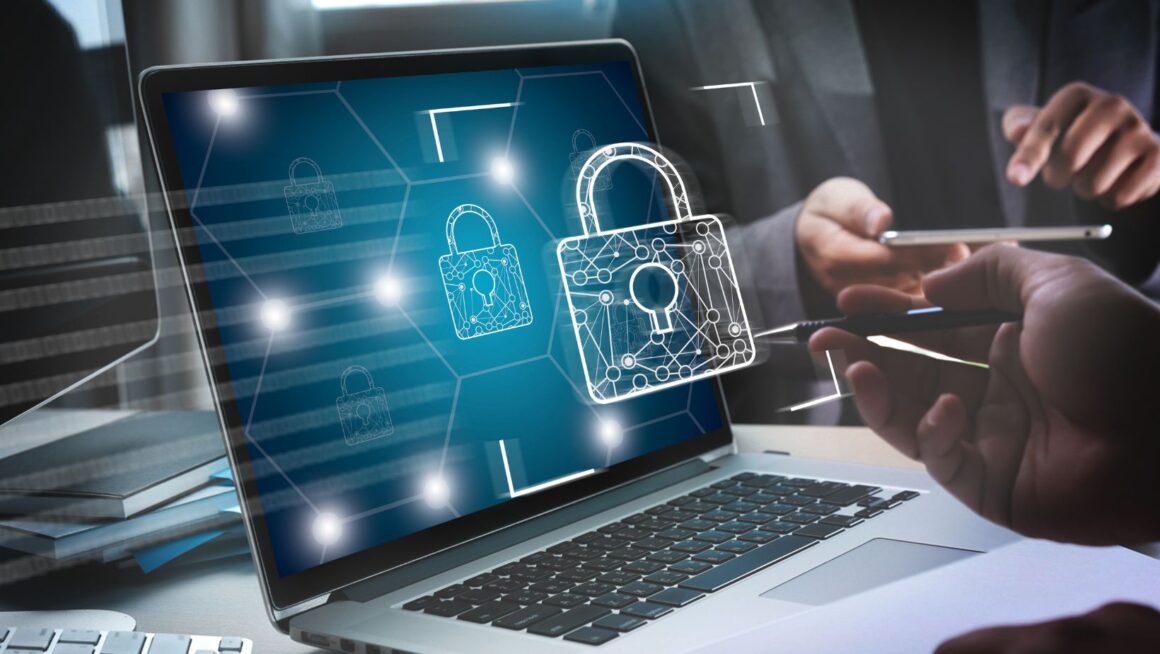In today’s digital age, where nearly everything we do involves technology, the importance of protecting our online identities cannot be overstated. Cyber threats lurk around every corner, targeting individuals and organizations alike. As technology evolves, so do the tactics used by cybercriminals. This article delves into the essentials of identity threat detection and response, providing you with a clear understanding of how to safeguard your personal information and maintain your privacy in a rapidly changing digital landscape.
Understanding Identity Threats
Identity threats can take many forms. They often include identity theft, phishing scams, data breaches, and more. Understanding what these threats are is the first step toward protecting yourself.
Identity Theft
Identity theft occurs when someone steals your personal information, such as your name, Social Security number, or credit card details, to commit fraud. This can lead to significant financial loss, damage to your credit score, and a long, arduous process of restoring your identity.
Phishing Scams
Phishing scams involve tricking individuals into providing their personal information by masquerading as a trustworthy source. These scams can occur through email, social media, or text messages, making it essential to be vigilant about the information you share online.
Data Breaches
Data breaches happen when unauthorized individuals access confidential information stored in databases. These breaches can affect large corporations, government agencies, and even small businesses, putting countless personal records at risk.
Other Cyber Threats
Other cyber threats include malware attacks, ransomware, and social engineering tactics. Each of these poses a significant risk to your identity and privacy. The key to defending against these threats is being proactive and informed about the various tactics cybercriminals use.
Why Identity Threat Detection Matters
With the rise of cyber threats, the need for effective identity threat detection has never been greater. Detecting threats early allows you to respond swiftly and mitigate potential damage. Here’s why identity threat detection is crucial:
- Timely Response: Early detection enables you to act before significant harm is done. If you notice unusual activity, you can take steps to secure your accounts and report the incident.
- Reduced Impact: By identifying threats early, you can minimize the consequences. For example, if you detect a phishing attempt, you can avoid sharing sensitive information and reduce the risk of identity theft.
- Peace of Mind: Knowing you have robust identity threat detection measures in place allows you to navigate the digital world with confidence.
Key Components of Identity Threat Detection
To effectively detect identity threats, it’s essential to understand the key components of a robust detection system. Here are the main elements to consider:
1. Monitoring
Continuous monitoring of your online accounts and personal information is crucial for safeguarding your identity. This includes regularly checking your bank accounts, credit reports, and online profiles. By doing so, you can detect suspicious activity early, helping to prevent identity theft and financial loss. Many identity protection services, such as LifeLock and IdentityGuard, provide tools that alert you to unusual transactions. Implementing Identity Threat Protection measures ensures that you stay informed about potential risks. Take action today by enrolling in a service or setting a routine to review your accounts to keep your personal information secure.
2. Alerts and Notifications
Setting up alerts for significant account changes, unusual transactions, or new logins can help you catch threats early. Many financial institutions and online services offer customizable notifications to keep you informed.
3. Security Software
Using up-to-date security software on your devices is vital for identifying potential threats. Antivirus programs, firewalls, and anti-malware tools can help protect your devices from malicious attacks.
4. Multi-Factor Authentication (MFA)
Implementing multi-factor authentication adds an extra layer of security. MFA requires users to verify their identity through multiple methods, such as a password and a text message code. This makes it significantly harder for cybercriminals to gain unauthorized access to your accounts.
5. Regular Updates
Regularly updating your passwords and ensuring that your software and applications are current can prevent vulnerabilities that cybercriminals might exploit.
Response Strategies for Identity Threats
Even with the best detection systems in place, there’s always a possibility of a threat slipping through the cracks.

When this happens, having a well-defined response strategy is crucial. Here are the steps to take if you suspect an identity threat:
1. Assess the Situation
The first step is to determine the extent of the threat. Are your financial accounts compromised? Has someone accessed your personal information? Understanding the situation will help you decide the best course of action.
2. Secure Your Accounts
Immediately change your passwords for any compromised accounts. Use strong, unique passwords and enable multi-factor authentication whenever possible. This helps protect your accounts from further unauthorized access.
3. Report the Incident
If you’ve been a victim of identity theft or if you suspect that your personal information has been compromised, report it to the relevant authorities. This could include local law enforcement, your bank, or the credit reporting agencies. Reporting the incident helps establish a record and can aid in recovering lost funds.
4. Monitor Your Accounts
After a threat is detected, continue to monitor your accounts closely. Check your bank statements, credit reports, and online profiles regularly for any unusual activity. This will help you catch any further attempts at identity theft.
5. Consider Identity Theft Protection Services
If you’re concerned about ongoing threats, consider enrolling in an identity theft protection service. These services provide monitoring, alerts, and recovery assistance in the event of a breach.
Identity Threat Protection: A Proactive Approach
To truly safeguard your identity, taking a proactive approach is essential. Identity threat protection involves implementing measures that prevent threats before they occur. Here are some key strategies for effective identity threat protection:
1. Education and Awareness
Stay informed about the latest cyber threats and scams. Knowledge is your best defense. By understanding how cybercriminals operate, you can better protect yourself from their tactics.
2. Strong Password Practices
Use strong, unique passwords for each of your accounts. Avoid using easily guessed information, such as birthdays or common words. Consider using a password manager to help you create and store complex passwords securely.
3. Limit Personal Information Sharing
Be cautious about the information you share online. Review your privacy settings on social media and avoid oversharing personal details that could be used for identity theft.
4. Secure Your Devices
Ensure that your devices are secure. Use antivirus software, firewalls, and encryption to protect your data. Regularly update your operating systems and applications to fix any security vulnerabilities.
5. Use Secure Networks
Avoid using public Wi-Fi for sensitive transactions. Public networks can be less secure, making it easier for cybercriminals to intercept your data. If you need to use public Wi-Fi, consider using a Virtual Private Network (VPN) for added security.
The Role of Technology in Identity Threat Detection and Response
As technology continues to advance, so do the tools available for identity threat detection and response. Many companies and organizations are investing in sophisticated technologies to enhance their security measures. Here are some of the latest technologies in the field:
Artificial Intelligence (AI)
AI is becoming increasingly important in identity threat detection. Machine learning algorithms can analyze large amounts of data to identify patterns and anomalies that may indicate a threat. By leveraging AI, organizations can respond to potential threats more quickly and effectively.
Biometrics
Biometric authentication, such as fingerprint and facial recognition, provides a secure way to verify identity. This technology is becoming more common in smartphones and banking applications, adding an additional layer of security against unauthorized access.
Blockchain Technology
Blockchain offers a decentralized approach to data security. By securely recording transactions and identity information, blockchain can help protect against data breaches and identity theft. These advanced measures are essential for effective Identity Threat Protection in today’s digital environment.
Automated Threat Detection
Automated threat detection systems can continuously monitor networks for suspicious activity, allowing organizations to respond quickly to potential threats. These systems can reduce the workload on IT teams and improve overall security.
Building a Culture of Cybersecurity
To effectively combat identity threats, organizations must foster a culture of cybersecurity. This involves training employees, establishing clear policies, and encouraging best practices.

Here’s how to create a cybersecurity-conscious environment:
1. Employee Training
Regular training sessions can help employees recognize potential threats and understand the importance of cybersecurity. Training should cover topics such as phishing scams, password security, and safe browsing practices.
2. Establishing Policies
Organizations should implement clear cybersecurity policies that outline acceptable behaviors and procedures for reporting incidents. These policies should be easily accessible and regularly reviewed to stay current with evolving threats.
3. Encouraging Communication
Encouraging open communication about cybersecurity concerns can create a supportive environment. Employees should feel comfortable reporting suspicious activity without fear of reprisal.
4. Recognizing Good Practices
Recognizing and rewarding employees who demonstrate good cybersecurity practices can reinforce the importance of vigilance and proactive measures.
Conclusion
In a world where cyber threats are constantly evolving, identity threat detection and response are critical to protecting yourself and your information. By understanding the nature of identity threats, implementing proactive measures, and fostering a culture of cybersecurity, you can significantly reduce your risk of becoming a victim of identity theft.
Remember, the key to effective identity threat protection is vigilance and awareness. Stay informed about the latest threats, utilize technology to your advantage, and always be proactive in safeguarding your identity. By taking these steps, you can navigate the digital landscape with confidence, knowing that you have the tools and knowledge to defend against cyber attacks.



